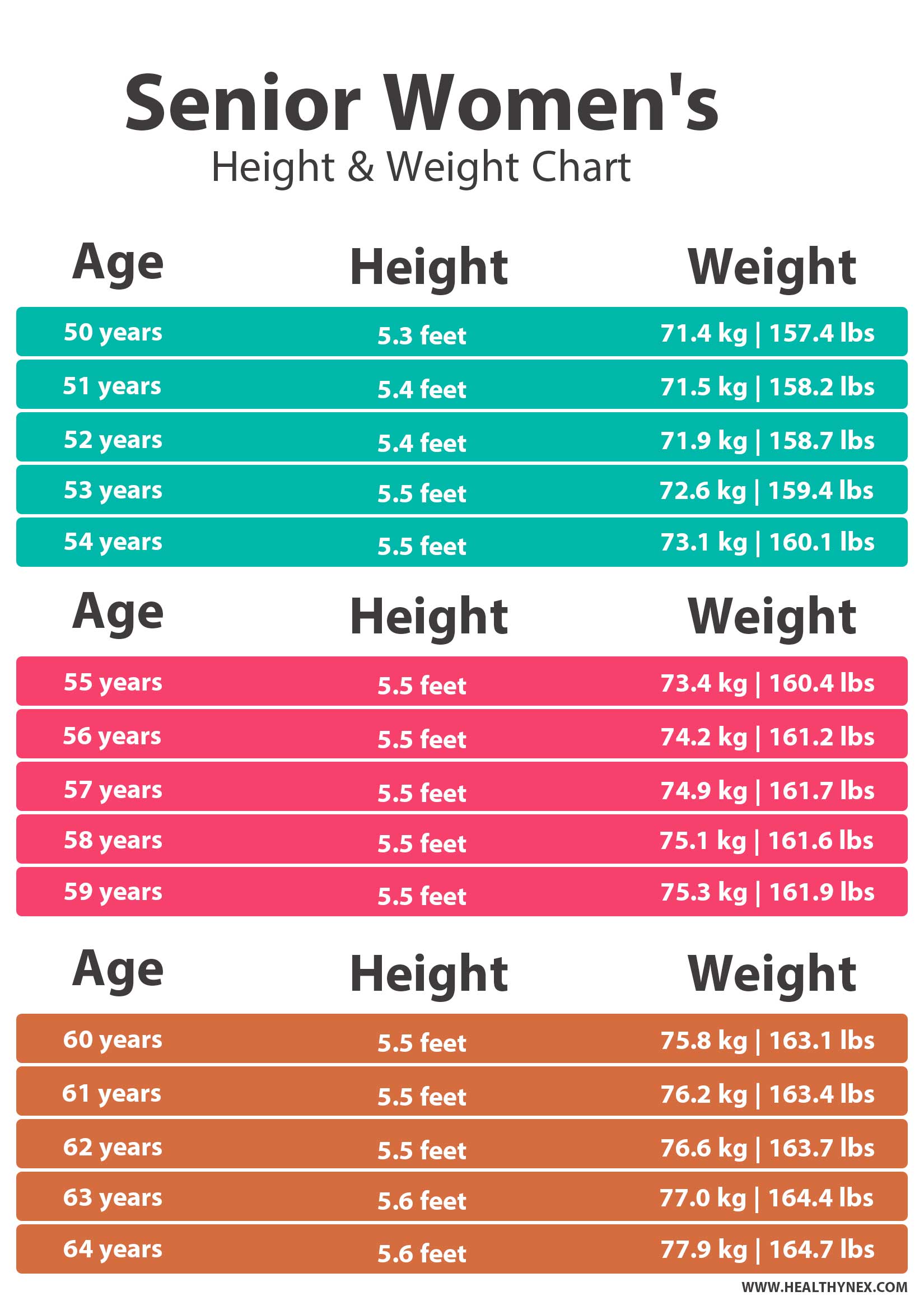Maintaining a healthy weight is crucial for overall wellbeing and disease prevention. However, determining what constitutes a “healthy weight” isn’t as simple as stepping on a scale—it depends on factors like height, gender, age, and body composition. Height-weight charts provide a valuable reference point for understanding where you stand and setting realistic health goals.
In this comprehensive guide, we’ll explore height-weight charts for men and women, explain how to interpret them, and provide practical advice for maintaining a weight that supports your long-term health.
Why Monitor Your Height-Weight Ratio?
Regular monitoring of height-weight ratios helps identify potential health risks early
Your height-weight ratio serves as an important indicator of your overall health status. When your weight is proportional to your height, you’re more likely to experience:
- Reduced risk of chronic diseases like diabetes, heart disease, and certain cancers
- Better joint health and mobility
- Improved energy levels and physical functioning
- Enhanced mental wellbeing and self-confidence
- Longer life expectancy with fewer health complications
Healthcare providers regularly use height-weight charts to screen for potential health risks and guide treatment decisions. These charts serve as a starting point for more detailed health assessments and personalized recommendations.
Track Your Progress with Ease
Download our printable height-weight chart to monitor your health journey at home. Includes both metric and imperial measurements.
BMI vs. Height-Weight Charts: Understanding the Difference
Body Mass Index (BMI)
BMI is a mathematical formula that uses your weight and height to estimate body fat and categorize weight status:
BMI Formula: Weight (kg) ÷ [Height (m)]²
BMI Categories:
- Underweight: Below 18.5
- Normal weight: 18.5–24.9
- Overweight: 25–29.9
- Obesity: 30 and above
Advantage Quick and easy calculation
Limitation Doesn’t account for muscle mass, bone density, or body composition
Height-Weight Charts
Height-weight charts provide specific weight ranges based on height, often accounting for factors like gender, age, and frame size:
Key Features:
- Separate ranges for men and women
- Sometimes include adjustments for age
- May consider small, medium, or large frame sizes
- Provide weight ranges rather than single values
Advantage More nuanced than BMI alone
Limitation Still doesn’t fully account for individual variations
Expert Insight: While both BMI and height-weight charts are useful screening tools, they should be used as starting points rather than definitive measures of health. Your healthcare provider can help interpret these numbers in the context of your overall health profile.
Find Your Ideal Range
Use our interactive calculator to determine your ideal weight range based on your height, age, and body frame.
Height-Weight Chart for Men
Men typically have higher muscle mass and bone density than women, which is reflected in their recommended weight ranges. The following chart provides healthy weight ranges for adult men based on height.

Healthy weight ranges for men based on height (metric and imperial units)
| Height (ft/in) | Height (cm) | Ideal Weight Range (lbs) | Ideal Weight Range (kg) |
| 5’0″ | 152 | 128–156 | 58–71 |
| 5’2″ | 157 | 133–163 | 60–74 |
| 5’4″ | 163 | 139–169 | 63–77 |
| 5’6″ | 168 | 145–177 | 66–80 |
| 5’8″ | 173 | 152–186 | 69–84 |
| 5’10” | 178 | 159–194 | 72–88 |
| 6’0″ | 183 | 166–202 | 75–92 |
| 6’2″ | 188 | 173–211 | 78–96 |
| 6’4″ | 193 | 180–220 | 82–100 |
Note: These ranges are based on average body compositions and may vary depending on muscle mass, bone density, and overall body frame. Athletes and individuals with higher muscle mass may weigh more while still maintaining a healthy body fat percentage.
Height-Weight Chart for Women
Women naturally have different body compositions than men, with higher essential body fat percentages needed for hormonal balance and reproductive health. The following chart provides healthy weight ranges for adult women based on height.

Healthy weight ranges for women based on height (metric and imperial units)
| Height (ft/in) | Height (cm) | Ideal Weight Range (lbs) | Ideal Weight Range (kg) |
| 5’0″ | 152 | 104–127 | 47–58 |
| 5’2″ | 157 | 108–132 | 49–60 |
| 5’4″ | 163 | 114–138 | 52–63 |
| 5’6″ | 168 | 120–146 | 54–66 |
| 5’8″ | 173 | 126–154 | 57–70 |
| 5’10” | 178 | 132–162 | 60–74 |
| 6’0″ | 183 | 138–170 | 63–77 |
Note: These ranges are based on average body compositions and may vary depending on muscle mass, bone density, and overall body frame. Women naturally require a higher essential body fat percentage (10-13%) compared to men (2-5%) for proper hormonal function.
Body Fat Percentage: A More Accurate Measure
While height-weight charts provide a useful reference, body fat percentage offers a more accurate assessment of health status. This measure distinguishes between lean mass (muscle, bone, organs) and fat mass, providing deeper insight into body composition.
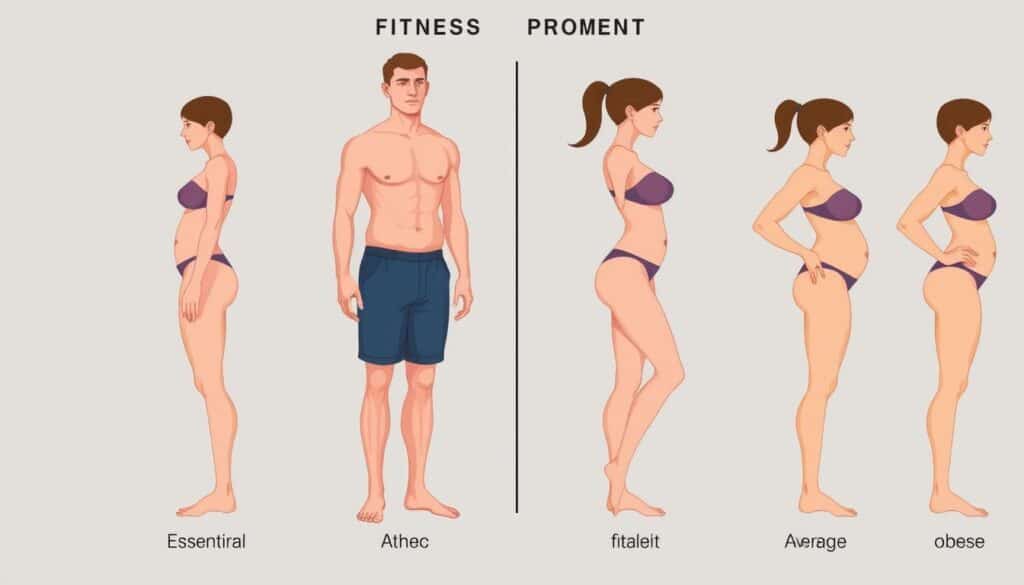
Visual comparison of different body fat percentage ranges for men and women
| Classification | Women (% Body Fat) | Men (% Body Fat) | Description |
| Essential Fat | 10–13% | 2–5% | Minimum needed for basic physiological functions |
| Athletes | 14–20% | 6–13% | Typical for competitive athletes |
| Fitness | 21–24% | 14–17% | Lean, defined appearance |
| Average | 25–31% | 18–24% | Typical for general population |
| Obese | 32%+ | 25%+ | Increased health risk |
Methods to measure body fat percentage include:
- Skinfold Calipers: Measures fat beneath the skin at specific body sites
- Bioelectrical Impedance: Uses electrical current to estimate fat (found in many modern scales)
- DEXA Scan: X-ray technology that provides detailed body composition analysis
- Hydrostatic Weighing: Underwater weighing that measures body density
Factors Influencing Ideal Weight
Height-weight charts provide general guidelines, but several factors influence what constitutes a healthy weight for your individual body:
Age
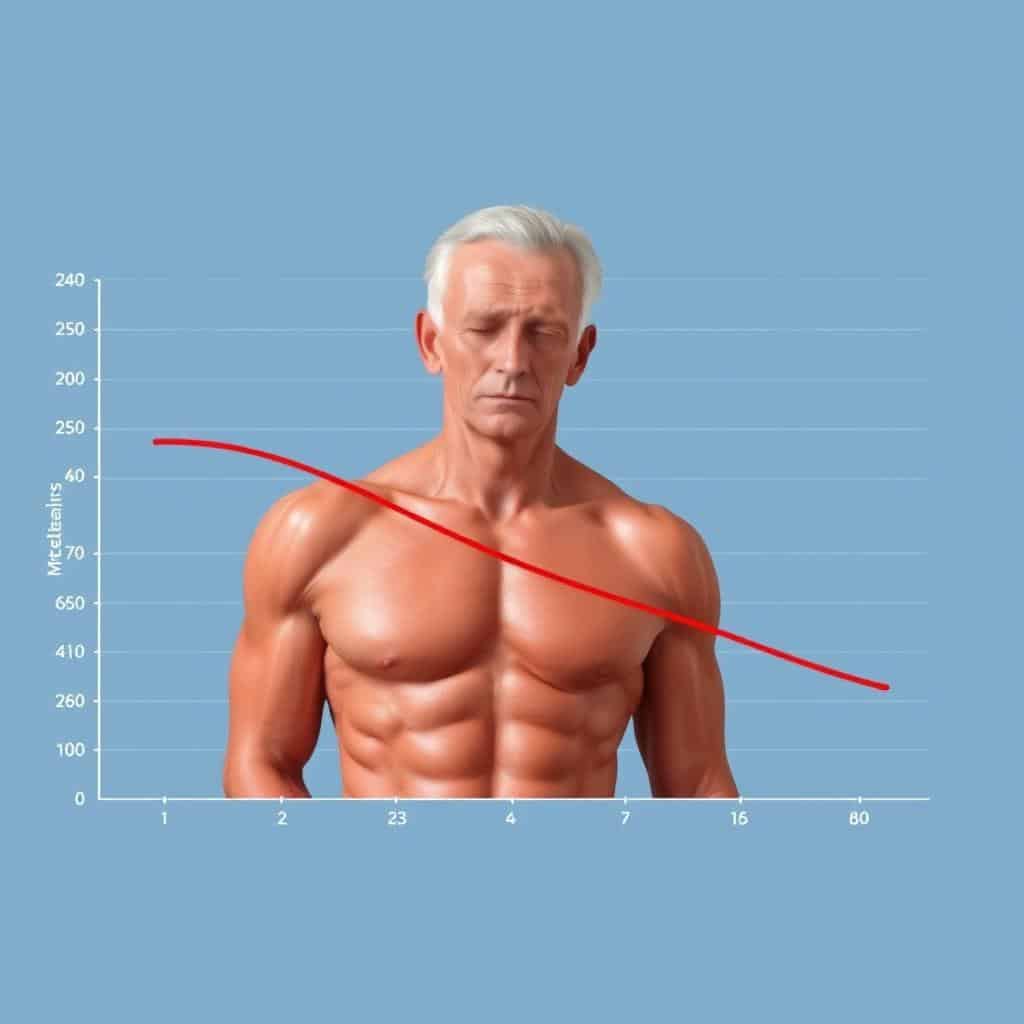
Metabolism naturally slows with age, and muscle mass tends to decrease. This often results in weight gain and changes in body composition, even without changes in diet or activity level.
Healthy weight ranges typically increase slightly with age to account for these natural changes.
Muscle Mass
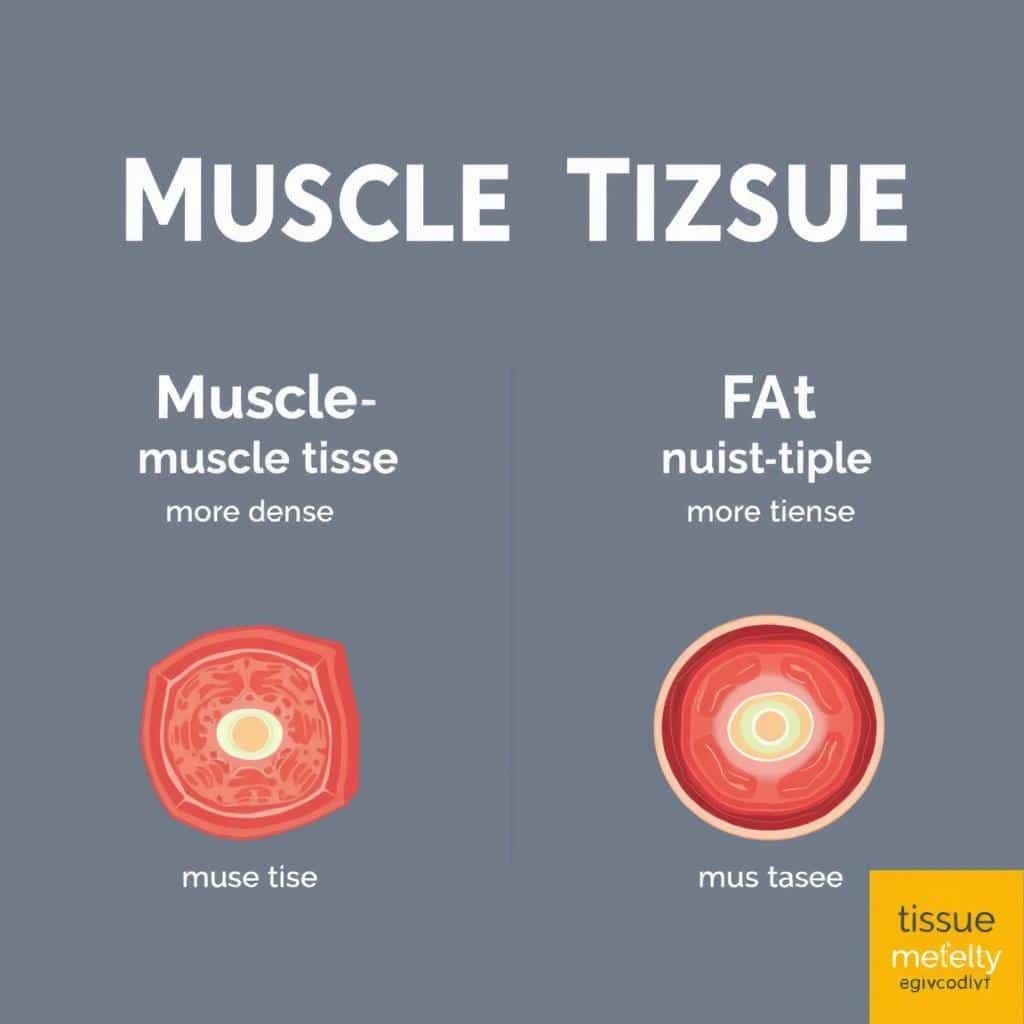
Muscle is denser than fat, meaning it weighs more for the same volume. Athletes and those who strength train regularly may weigh more than the charts suggest while maintaining a healthy body fat percentage.
This is why body composition is more important than weight alone.
Body Frame
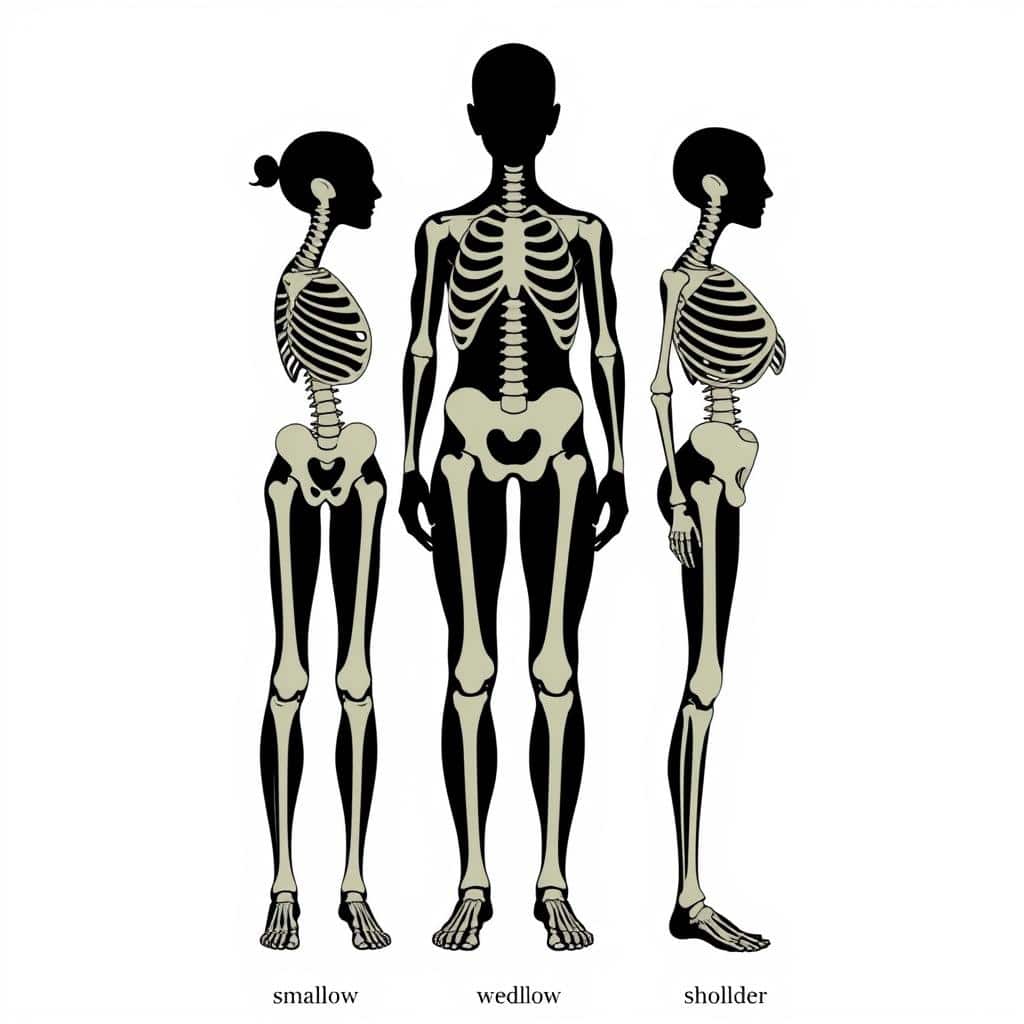
Bone structure varies significantly between individuals. Those with larger frames naturally weigh more than those with smaller frames, even at the same height.
You can estimate your frame size by measuring your wrist circumference in relation to your height.
Activity Level
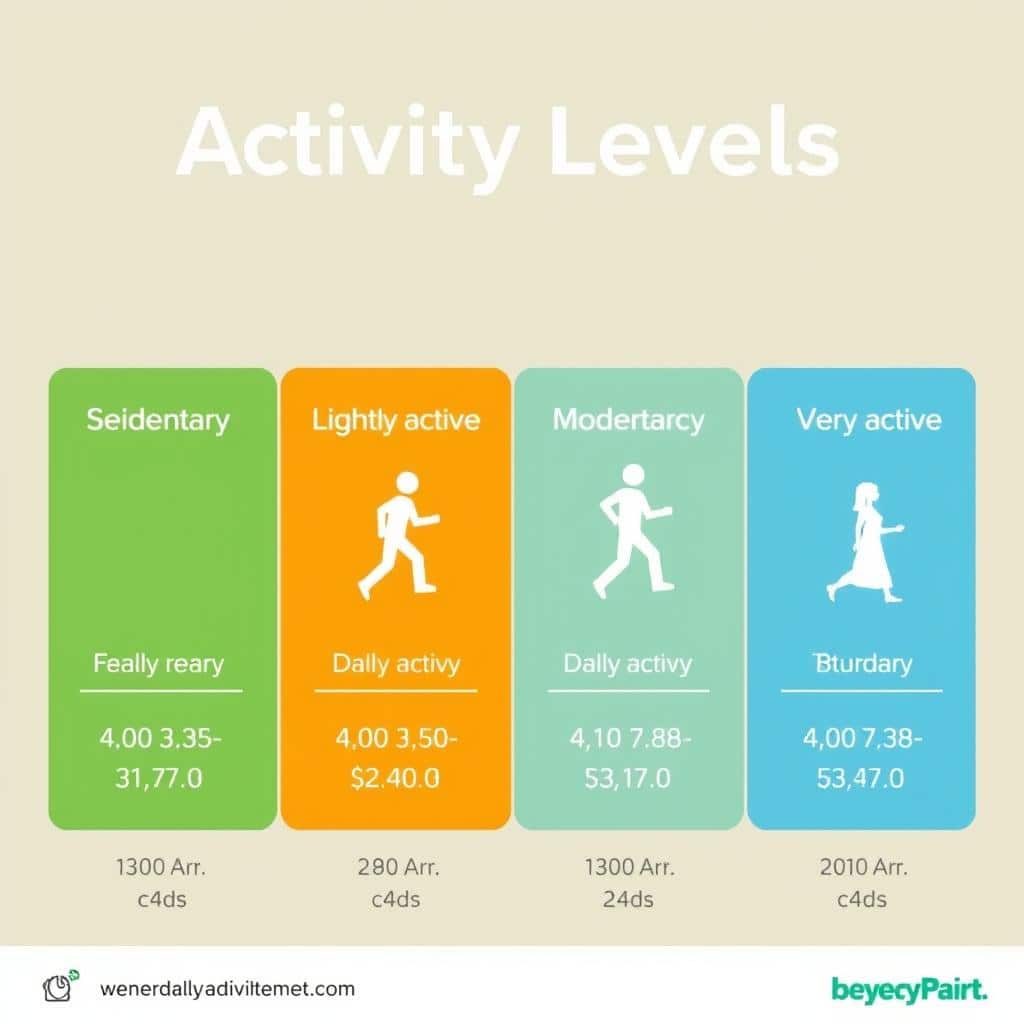
Higher activity levels increase calorie expenditure and often lead to greater muscle mass. Active individuals may maintain health at higher weights than sedentary people of the same height.
Regular exercise also improves metabolic health regardless of weight.
Genetics

Genetic factors influence metabolism, fat storage patterns, and natural body type. Some people naturally maintain lower or higher weights due to inherited traits.
Family history can provide insight into your genetic predispositions.
Health Conditions
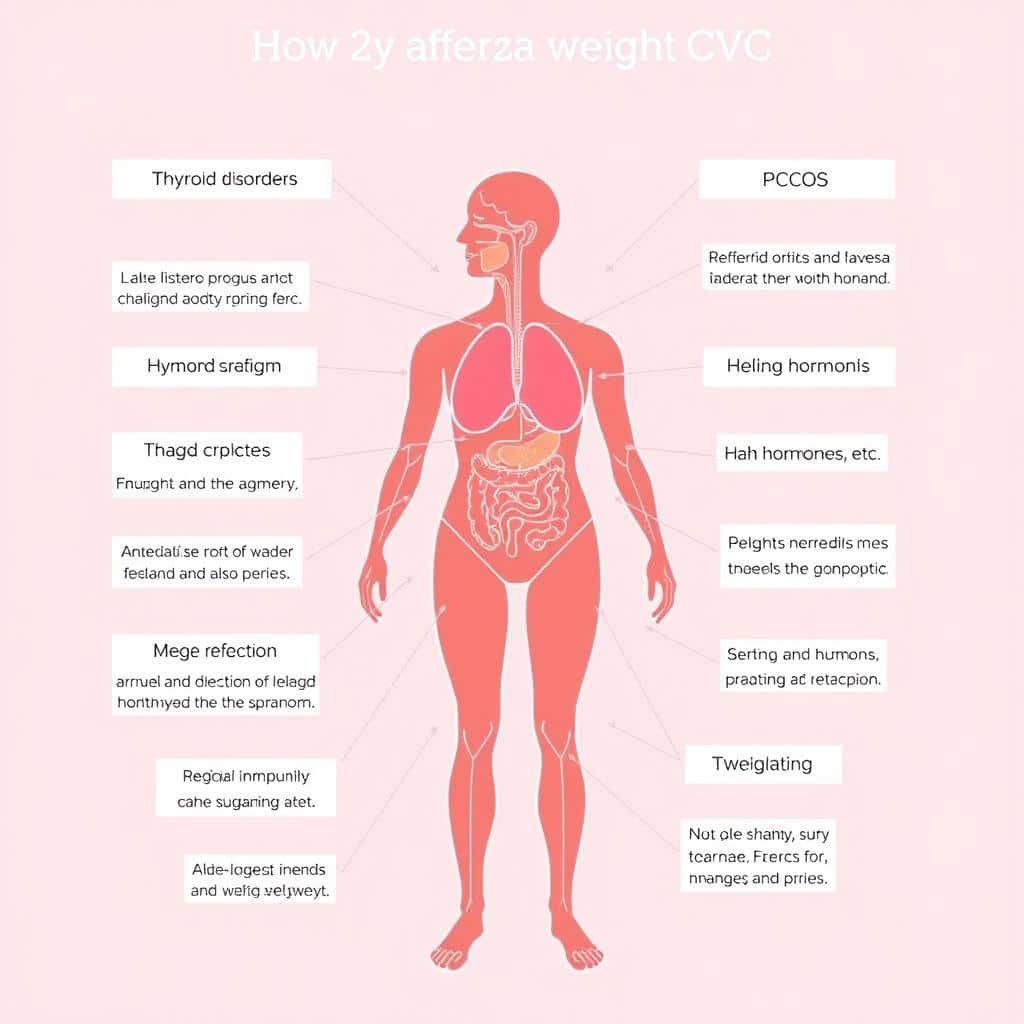
Certain medical conditions and medications can significantly impact weight. Thyroid disorders, hormonal imbalances, and some medications may cause weight fluctuations independent of diet or exercise.
Always consult healthcare providers about weight concerns related to health conditions.
Understand Your Unique Body Type
Take our comprehensive body composition assessment to receive personalized insights beyond basic height and weight measurements.
Practical Tips for Maintaining a Healthy Weight
Achieving and maintaining a healthy weight involves sustainable lifestyle habits rather than short-term diets. Here are evidence-based strategies to help you maintain a weight that’s healthy for your unique body:

A balanced diet with appropriate portions is fundamental to weight management
Nutrition Strategies
- Focus on whole foods: Prioritize vegetables, fruits, lean proteins, whole grains, and healthy fats
- Practice portion awareness: Use smaller plates, measure portions occasionally, and listen to hunger cues
- Stay hydrated: Drink water before meals and throughout the day
- Limit processed foods: Reduce intake of foods high in added sugars, refined carbs, and unhealthy fats
- Plan meals: Prepare healthy meals in advance to avoid impulsive, less nutritious choices
Physical Activity Guidelines

A combination of cardio, strength training, and flexibility exercises provides optimal health benefits
- Aim for 150+ minutes: Engage in moderate-intensity aerobic activity weekly (e.g., brisk walking, cycling)
- Include strength training: Perform muscle-strengthening activities at least twice weekly
- Find activities you enjoy: Sustainable exercise is activity you look forward to
- Reduce sedentary time: Break up sitting with short movement breaks throughout the day
- Increase daily movement: Take stairs, park farther away, and find ways to add steps to your routine
Lifestyle Habits
- Prioritize sleep: Aim for 7-9 hours of quality sleep nightly
- Manage stress: Practice stress-reduction techniques like meditation, deep breathing, or yoga
- Track progress: Monitor weight, measurements, or how clothes fit periodically
- Build a support system: Surround yourself with people who support your health goals
- Practice patience: Focus on gradual, sustainable changes rather than quick fixes
“The best approach to weight management is one that you can maintain for life—not a temporary diet but a sustainable way of eating and moving that supports your overall health.”
Frequently Asked Questions
What if my weight exceeds the chart range?
If your weight falls outside the recommended range, it doesn’t necessarily indicate a health problem. Height-weight charts are general guidelines and don’t account for individual factors like muscle mass, bone density, or body composition. Rather than focusing solely on weight, consider:
- How you feel physically and emotionally
- Your energy levels and ability to perform daily activities
- Other health markers like blood pressure, cholesterol, and blood sugar
- Your body fat percentage and distribution
Consult with a healthcare provider for a comprehensive health assessment and personalized recommendations.
Are height-weight charts applicable for athletes?
Standard height-weight charts often don’t accurately reflect healthy weights for athletes. Due to higher muscle mass, athletes typically weigh more than non-athletes of the same height while maintaining lower body fat percentages. For athletes, more relevant measures include:
- Body fat percentage
- Performance metrics
- Sport-specific body composition assessments
- Overall health markers
Athletes should work with sports nutritionists or trainers familiar with their specific sport’s demands to determine optimal body composition goals.
How often should I check my weight?
The optimal frequency for weighing yourself depends on your goals and psychological relationship with the scale. Some guidelines include:
- For general health maintenance: Once every 1-2 weeks
- For weight loss monitoring: 1-2 times per week, same day and time
- For weight maintenance after loss: Once weekly
Remember that daily fluctuations of 1-5 pounds are normal due to factors like hydration, food intake, and hormonal changes. Focus on long-term trends rather than day-to-day numbers.
Do height-weight charts vary by ethnicity?
Yes, there are ethnic variations in body composition and health risks at different BMIs. For example:
- Asian populations may have higher health risks at lower BMI levels
- Some African and Pacific Islander populations may have higher muscle and bone mass
- The World Health Organization has suggested different BMI thresholds for certain ethnic groups
These differences highlight the importance of considering ethnic background when interpreting height-weight charts and assessing health risks.
How accurate are online ideal weight calculators?
Online ideal weight calculators vary in accuracy depending on their methodology. Most use simple formulas like:
- The Devine formula: Ideal weight (men) = 50 kg + 2.3 kg per inch over 5 feet
- The Robinson formula: Ideal weight (women) = 49 kg + 1.7 kg per inch over 5 feet
These calculators provide rough estimates but don’t account for individual factors like muscle mass, bone density, or genetic variations. They’re best used as starting points rather than definitive targets.
Should children use adult height-weight charts?
No, children and adolescents should not use adult height-weight charts. Their bodies are still developing, and their healthy weight ranges differ significantly from adults. Instead:
- Children should be assessed using age and gender-specific growth charts
- Pediatricians track percentiles rather than absolute weights
- Focus should be on healthy growth patterns rather than weight alone
The CDC and WHO provide specialized growth charts for children and adolescents that healthcare providers use to monitor healthy development.
Get Personalized Guidance
Receive customized weight management tips based on your unique body composition, lifestyle, and health goals.
References and Resources
- World Health Organization (WHO). Obesity and Overweight Fact Sheet. Accessed April 2025.
- Centers for Disease Control and Prevention (CDC). Assessing Your Weight. Accessed April 2025.
- National Institute of Diabetes and Digestive and Kidney Diseases. Weight Management. Accessed April 2025.
- American Heart Association. Losing Weight. Accessed April 2025.
- Harvard T.H. Chan School of Public Health. Healthy Weight. Accessed April 2025.
Conclusion: A Balanced Approach to Weight Management
Height-weight charts for men and women provide valuable reference points for understanding healthy weight ranges, but they’re just one tool in the broader context of health assessment. Remember that healthy bodies come in diverse shapes and sizes, and numerous factors beyond weight influence overall wellbeing.
Rather than fixating on reaching a specific number on the scale, focus on developing sustainable habits that support your long-term health: nutritious eating patterns, regular physical activity, adequate sleep, and stress management. These lifestyle factors have profound health benefits regardless of whether they lead to weight changes.
If you’re concerned about your weight or health, consult with healthcare professionals who can provide personalized guidance based on your unique circumstances. They can help you interpret height-weight charts in the context of your overall health profile and develop an approach that works for your individual body and lifestyle.

Focus on developing sustainable healthy habits rather than fixating on a specific weight



